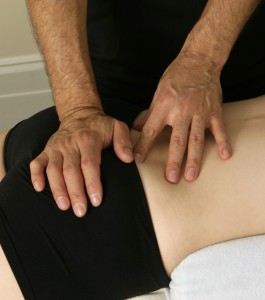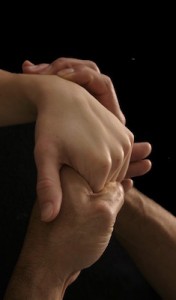What to expect
Listening to you
The aim of the initial consultation is to understand your presenting problem and inform you of what is causing (diagnosis) your discomfort. To achieve this, a detailed case history is taken (20 –30 minutes). It will cover the problem you have, previous injuries, general health, illness, life-style and family medical history.
 Dress
Dress
At consult and follow-up appointments, you will be asked to undress down to your underwear (pants and bra) to allow for an accurate physical assessment. This allows the Osteopath to gather information related not only to the area of pain but also to other areas that may be contributing to your discomfort. You may bring along a vest top and shorts which you may wear if the osteopath no longer requires access to that area of your body.
 Finding out more about your problem
Finding out more about your problem
The Osteopathic physical examination will involve looking (observing), soft tissue assessment (palpating) and joint motion testing. During the examination, the Osteopath will assess the area of pain and other related areas. The Osteopath will explain the findings and the diagnosis to you. If further examination or investigation is necessary, or Osteopathic treatment is considered to be unsafe, hands-on treatment will not be carried out. Toggle Content
 Explaining The Findings
Explaining The Findings
The Osteopath will tell you what the possible cause of your problem is, which is the diagnostic aspect of the consultation. Osteopaths are fully trained in diagnosis and use many of the procedures employed by medical doctors. More specific clinical tests may also be carried out or a referral made if it is deemed necessary.
 Helping you to feel better
Helping you to feel better
Pain and disability often arise from other problems within the body. Therefore the treatment will address the painful region and other areas that may appear to be unrelated. By improving how other areas of the body move, this promotes healing and health within your body.
Chaperone
Please feel free to bring a friend along.
More than technique
During your treatment, the Osteopath may use techniques such as; muscular stretching, repetitive joint motion (pulling or pushing motions) or constant pressure applied for long periods of time, to different areas of the body. The Osteopath may use other techniques including, the Joint Thrust Technique. This involves a very small sudden rapid movement applied to a joint. This results in the joint being separated for a few seconds (sometimes a click or pop is heard) which helps to improve the joint’s range of motion. It is important to remember that these are techniques used by Osteopaths, rather than Osteopathy itself.


